#myliobatiformes
Text

Lessiniabatis aenigmatica was a rather strange stingray.
It lived around 50-48 million years ago during the early Eocene, in a shallow warm sea covering what is now Italy, with its three known fossil specimens all coming from the fish-rich Monte Bolca fossil beds.
About 60cm long (~2'), it had a round pancake-like body similar to many modern seafloor-dwelling stingrays – but uniquely it was also almost tailless, with only a tiny, slender, stingless tail.
It wasn't a particularly strong swimmer, instead probably spending most of its time buried in the muddy seafloor sediment. When on the move it likely swam along just above the surface of the seafloor using undulations of its fins, foraging for smaller bottom-dwelling animals like worms, molluscs, crustaceans, and fish.
—
NixIllustration.com | Tumblr | Patreon
#science illustration#paleontology#paleoart#palaeoblr#lessiniabatis#dasyatoidea#myliobatiformes#stingray#batoidea#ray#elasmobranch#chondrichthyes#cartilaginous fish#fish#art#sea pancake
486 notes
·
View notes
Text


Yellow Stingray (Urobatis jamaicensis), family Urotrygonidae, order Myliobatiformes, found along the Atlantic coast of The US and Central America and in the Caribbean
photographs by MattWright and FWC Fish and Wildlife Research Institute
#stingray#ray#elasmobranch#fish#ichthyology#ocean#urobatis#urotrygonidae#myliobatiformes#animals#nature#north america#central america#caribbean
325 notes
·
View notes
Text
Taxonomy Tournament: Chordata

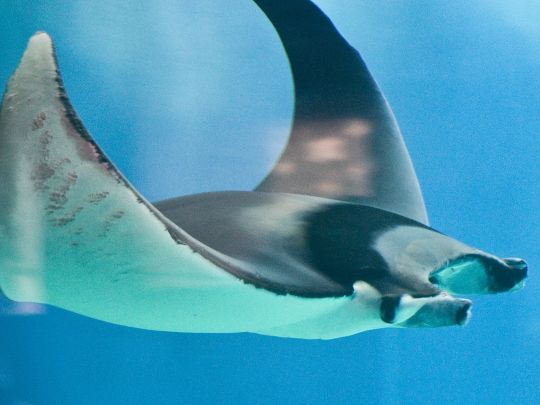
Myxiniformes. This order is known as hagfish, jawless fish which release slime from their skin to protect themselves from predators. They are the only known living species to have a skull but no vertebral column.
Myliobatiformes. This order of batoids includes stingrays and manta rays.
#animals#biology#polls#poll tournament#zoology#hagfish#stingrays#manta rays#fish#rays#Myxiniformes#Myliobatiformes#0xbv0x34
204 notes
·
View notes
Photo

A bluespotted ribbontail ray (Taeniura lymma) off the coast of Safaga, Egypt
by Kary Mar
#bluespotted ribbontail ray#rays#stingrays#fish#cartilaginous fish#Taeniura lymma#taeniura#dasyatidae#Myliobatiformes#Chondrichthyes#chordata#wildlife: egypt#wildlife: africa
439 notes
·
View notes
Text
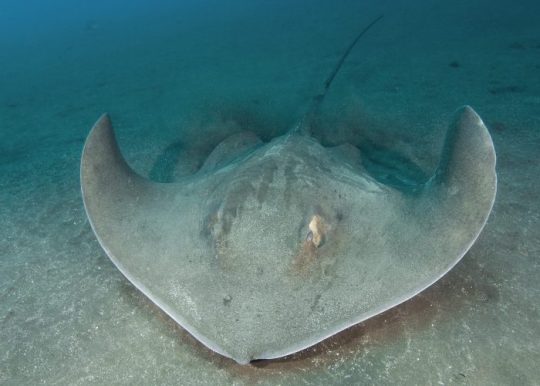

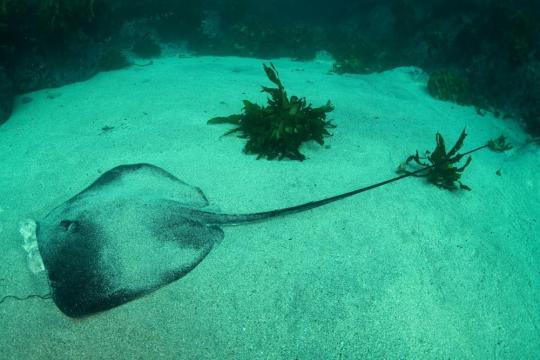
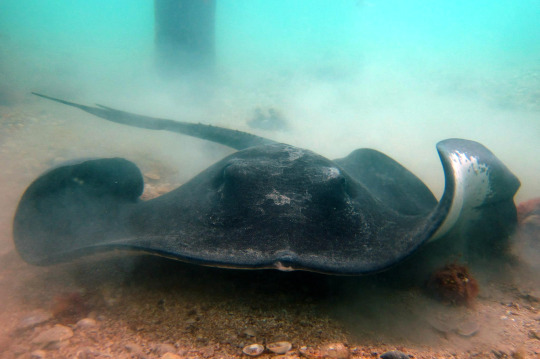
A Stingray Abroad: The Broad Stingray
Bathytoshia lata is a stingray known by many names: the broad stingray, the brown stingray, and thorn tail stingray; Dasyatis lata, Dasyatis thetidis, and Dasyatis ushii. The species has accumulated all these names-- and quite a few others-- thanks to its broad distribution. It can be found in the Atlantic, Pacific, and Indian Oceans, as well as the Mediterranean sea. Typically the species stays on reefs or in coastal bays with muddy bottoms. Prior to 2012, genetic testing of stingray species revealed them to be populations of B. lata, hence the multitude of latin names.
The broad stingray is one of the largest species of stingrays; the average individual is about 1.5 m (5 ft) across and 56 kg (123 lb), with some populations reaching an excess of 2.6 m (8.5 ft) across and 290 kg (639 lbs). Females also tend to be larger than males. The body is diamond shaped, and the tail is often more than twice its length. B. lata is dark in color, often tan or black, with a white underbelly. Perhaps its most distinctive feature are the 'spines'-- also known as dermal denticles-- that line the tail and rear portion of the body, giving it the name 'thorn tail'.
The brown stingray is fairly docile, and spends most of the day lying inactive on the sea bed. At night they forage for crustaceans, polychaete worms, and small fish. They can use their powerful pectoral fins to burrow through the sand and uncover prey, and like sharks they have special organs called ampullae of Lorenzini that allow them to detect electrical fields emitted by their prey. The primary predator of B. lata is the hammerhead shark, and when threatened individuals will raise the spines along their tail to deliver whip-like blows.
Females become ready to mate in the summer, typically from November to March. Males are attracted to pheromones released by the female, and initiate a dance-like courtship ritual. If the female is receptive, he will bite down on her pectoral fins while grasping her with special claspers located at the base of the tail. Following the mating ritual, the female gestates her young internally for 10-12 months. This species is ovoviviparous, and the pups recieve nutirents from both a yolk and internally secreted milk. Following her pregnancy, the mother gives birth to live young, typically 3-4 in a litter. The pups are completely independent, and receive no parental care after being born. It takes them about 14-16 years to become fully mature, and individuals can live up to 28 years in the wild.
Conservation status: The broad stingray is considered Vulnerable by the IUCN. Its most common threat comes from being caught as by-catch in fishing nets, and intentionally for their meat and skin.
If you like what I do, consider leaving a tip or buying me a kofi!
Photos
Andy Murch
Sarah Speight
Andrew Green
Phillipe Guillaume
#broad stingray#black stingray#Myliobatiformes#Dasyatidae#whiptail stingrays#stingrays#rays#cartilaginous fish#fish#marine fauna#marine fish#coral reefs#coral reef fish#benthic fauna#benthic fish#coasts#coastal fish#Atlantic Ocean#Indian Ocean#Pacific Ocean#Mediterranean sea#animal facts#biology#zoology#ecology
90 notes
·
View notes
Text
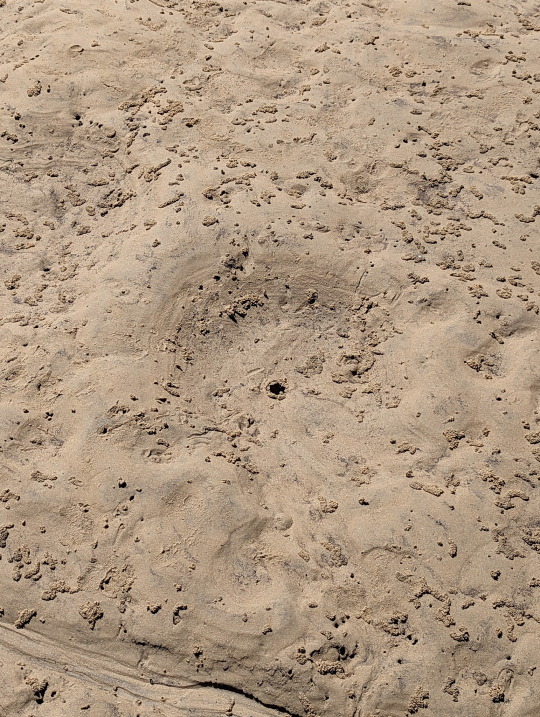



Stingray feeding pits (ignore the holes in the centre, that's from GPS equipment).
The stingrays would come to Leeke's Estuary at high tide to feed. To hunt any sediment-dwelling organisms, the stingrays would dig into the sand, displacing a large amount of sediment in the process. This left large distinct holes across the estuary's sediment.
This impacts the ecosystem in a few interesting ways, such as the recolonization of pits by various organisms (VanBlaricom 1982).
More information:
VanBlaricom GR 1982 ‘Experimental Analyses of Structural Regulation in a Marine Sand Community Exposed to Oceanic Swell’ Ecological monographs vol. 52 no. 3 pp. 295-302.
O’shea OR, Thums, M, Keulen, MV, Meekan, M 2012, ‘Bioturbation by stingrays at Ningaloo Reef, Western Australia’, Marine and freshwater research, vol. 63, no. 3, p. 195.
12/09/23 - Myliobatiformes sp.
QLD:CQC, Woppa (Great Keppel Island), Leeke's Estuary, coastal mangrove forest
#Myliobatiformes#Stingrays#Vertebrata#Vertebrates#Chordata#Chordates#Elasmobranchii#Elasmobranchs#rays#marine biology
18 notes
·
View notes
Text

RESEARCHERS NAMED A NEW SPECIES AS THE SANDWICH-TAIL
Dwarf stingrays (Brevitrygon spp), are found in soft bottoms in the continental shelves of the Indo-West Pacific from the Red Sea to Indonesia. These are usually found in fish markets along their distribution, and are frequently misidentified. Now, stingray experts have uncovered a new Brevitrygon species, from specimens collected between 1955 and 2014 from Pakistan to Mumbai, western India.
The sandwich-tail whipray (Brevitrygon manjajiae) is named after Dr. Mabel Manjaji-Matsumoto, the first researcher to identify and name the rays in the 60' as sandwich-tail, following the color of the tail, as it have dark brown on the top and bottom sides of its tail with white sides.

-Lateral and dorsal view of the post-sting tail of Brevitrygon manjajiae, showing the "sandwhich-like coloration.
Now, researchers have cleared the natural history of these dwarf stingrays, and have realized the species varies depending on where they are found, as these stingrays usually do not overlap in their distribution, making easy their identification.
Photo: A male sandwich-tail whipray collected from the Arabian Sea near Pakistan. Scale bar: 2 cm
Reference (Open Access): Last et al., 2023. The Indo-Pacific Stingray Genus Brevitrygon (Myliobatiformes: Dasyatidae): Clarification of Historical Names and Description of a New Species, B. manjajiae sp. nov., from the Western Indian Ocean. Diversity
#new species#marine science#indo pacific#science#biology#sciblr#scienceblr#bioblr#brevitrygon#brevitrygon manjajiae
155 notes
·
View notes
Text
Adorable footage shows football-loving RAYS showing off their ball skills at London Aquarium
Adorable footage shows football-loving RAYS showing off their ball skills at London Aquarium
Manta rays are believed to be some of the most intelligent creatures in the ocean and have several traits and studies to support this claim.
The large fish belong to an order known as Myliobatiformes which includes stingrays and other similar species and is a group closely related to that of sharks and are characterized by their cartilaginous bodies.
Further classification of the majestic marine…
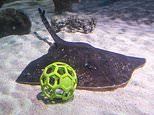
View On WordPress
0 notes
Photo
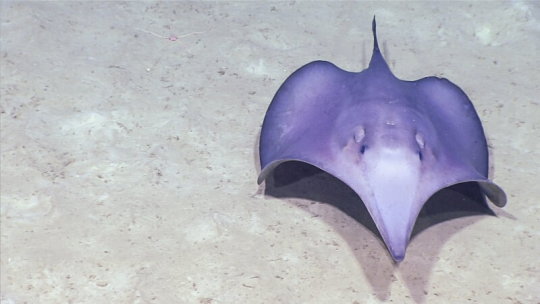
Sixgill stingray (Hexatrygon bickelli)
Photo by NOAA
#some animals are so shaped#sixgill stingray#stingray#hexatrygon bickelli#hexatrygon#hexatrygonidae#hexatrygonoidea#myliobatoidei#myliobatiformes#batoidea#neoselachii#euselachii#elasmobranchii#chondrichthyes#vertebrata#chordata
30 notes
·
View notes
Text

Heliobatis
Heliobatis — вимерлий рід скатів родини Dasyatidae з ряду Орлякоподібні (Myliobatiformes). На даний час рід містить один вид Heliobatis radians. Рід відомий в основному з раннього еоцену з відкладень Fossil Lake. Fossil Lake є частиною формації Грін-Рівер на південному заході Вайомінга. Heliobatis є одним із двох відомих скатів, які були знайдені в формації Грін-Рівер. Інший…
Повний текст на сайті "Вимерлий світ":
https://extinctworld.in.ua/heliobatis/
#heliobatis#eocene#fossil lake#wyoming#usa#north america#heliobatis radians#myliobatiformes#dasyatidae#paleoart#paleontology#prehistoric#вимерлі тварини#ukraineposts#палеонтологія#ukraine#доісторичні тварини#extinct animals#палеоарт#made in ukraine
5 notes
·
View notes
Text
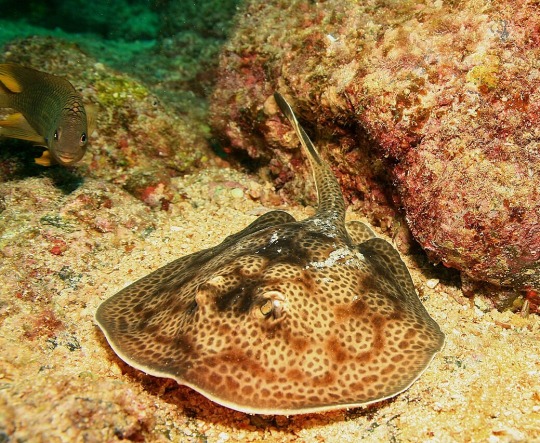
Leopard Round Stingray (Urobatis pardalis), family Urotrygonidae, order Myliobatiformes, Coiba National Park, Panama
photograph by LASZLO ILYES
#stingray#ray#elasmobranch#fish#ichthyology#ocean#urobatis#urotrygonidae#myliobatiformes#animals#nature#central america
221 notes
·
View notes
Text
Taxonomy Tournament: Cartilaginous Fish


Myliobatiformes. This order of batoids includes stingrays and manta rays.
Rhinopristiformes. This order includes shovelnose rays and sawfish
#animals#biology#polls#poll tournament#zoology#stingrays#manta rays#fish#rays#shovelnose rays#sawfish#Myliobatiformes#Rhinopristiformes#0x34v0x4b
101 notes
·
View notes
Photo

A Honeycomb whipray (Himantura undulata) in Egypt, Africa
by Karsten Kretz
#honeycomb whipray#stingrays#cartilaginous fish#Himantura undulata#himantura#Dasyatidae#Myliobatiformes#Chondrichthyes#chordata#wildlife: egypt#wildlife: africa
84 notes
·
View notes
Text
Uncharismatic Fact of the Day
Surprisingly enough, mammals aren't the only animals that provide their young with milk! The giant freshwater stingray is one of several species of cartelaginous, live-bearing fish that sustain their young to term through a form of maternal care called histotrophy, in which the mother provides her embryo(s) with nutritional, milk-like secretions known as trophonemata while they're in the uterus.
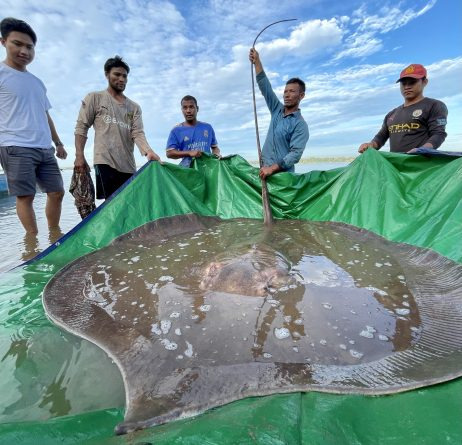
(Image: A giant freshwater stingray (Urogymnus polylepis) caught and released by Cambodian fishermen, by Chhut Chheana)
If you like what I do, consider leaving a tip or buying me a ko-fi!
#giant freshwater stingray#Myliobatiformes#Dasyatidae#whiptail stingrays#stingrays#batoids#cartilaginous fish#fish#uncharismatic facts
246 notes
·
View notes
Photo
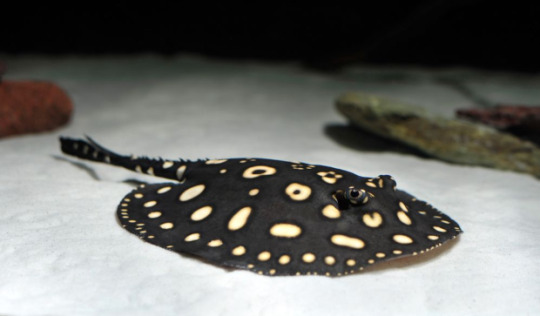
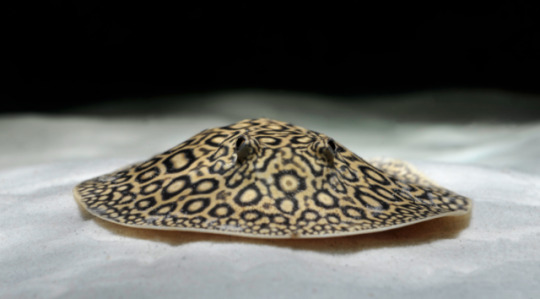
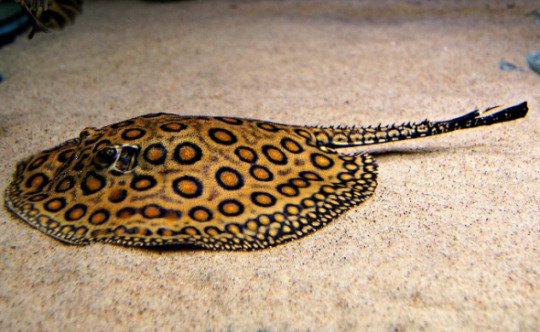
Freshwater Stingrays
Potamotrygonidae
#stingrays#freshwater stingrays#rays#potamotrygonidae#elasmobranchs#elasmobranchii#chondrichthyes#myliobatiformes#myliobatoidei#fish#ichthyology#cool#patterns#aquatic#aquatic life#animals#animalia#nature#biodiversity#wildlife#wildlife biology
3K notes
·
View notes
